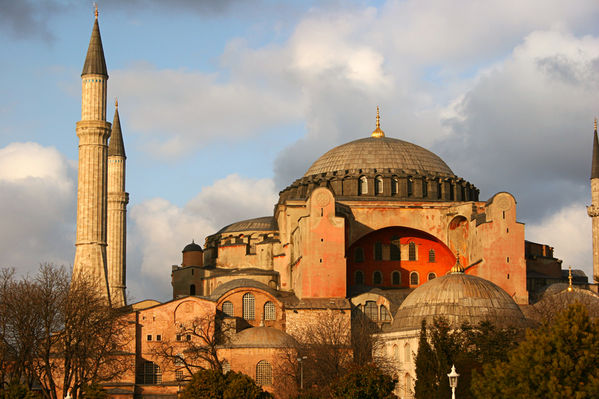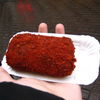Top 10 Eastern European Cities
Lindsey Wooldridge
When people visit Europe, they tend to congregate in Western Europe; very seldom do they travel to Eastern Europe beyond Prague or Budapest. While Western Europe is a necessary destination for all travelers, Eastern Europe should not be overlooked. To help you decide where to go, here are the ten excellent cities in Eastern Europe to consider on your next backpacking Europe Adventure.
Budapest, Hungary
Budapest, the capital of Hungary, is an interesting, cosmopolitan city that should not be underestimated Budapest’s beautiful historic section is Castle Hill on the Buda side of the Danube. Across the river is Pest, the sprawling and hectic center of the modern city that saw much of its development at the turn of century. Budapest is possibly more active, enticing, and bewildering than any other European city. Here, business people from as far as Moscow and London brush shoulders on the subway while youth from all over the world enjoy the city’s many great cafés, bars and clubs.
Istanbul, Turkey
Sultanahmet, the old city of Istanbul, plays host to the majority of tourist sites. All are within a short walking distance of each other. Start with the Topkapi Palace, Blue Mosque, Saint Sophia Museum, Hippodrome, Underground Cistern, Grand Bazaar and Egyptian Spice Markets. If these aren’t enough, get out of touristville and visit the Dolmabahce Palace, Camlica Hill (highest point in Istanbul on the Asian side), cruise up the Bosphorus (stretch of water separating Europe from Asia) or check out the Prince’s Islands in the Marmara Sea. If it’s bars you’re after, Akbiyik Caddesi is lined with cafés and bars, but if you wish to go where the locals go, try Taksim or Ortakoy.
Sofia, Bulgaria
In Sofia, upscale boutiques, student bars and McDonalds’ arches are perhaps more common than churches and museums, yet the city still retains some of its old world charm. It also serves as a gateway into the nearby mountains, home to the awe-inspiring Rila Monastery and other semi-hidden treasures.
Ljubljana, Slovenia
In Ljubljana travelers can experience the small town “feel” while taking advantage of this capital city’s resources, history and culture. Being centrally located in Slovenia it makes for a good base to explore the country’s mountains, lakes and caves. Partially on the Mediterranean and linking central Europe to the Balkans, a mix of Italian and Austro-Hungarian influences abound here and around Slovenia. Absorb the atmosphere with a stroll through the Baroque old town where you will find many quaint cafés along the Ljubljanica River and street performers playing tunes in the main square. The large student population provides for an active nightlife. This is a progressive place with a kind, helpful folk willing to engage in conversation in a multitude of languages.
Dalmatia, Croatia
With the Adriatic Sea on one side and the Dinaric Alps on the other, the southern part of Croatia from Zadar to Dubrovnik contains some of the Mediterranean’s most postcardesque scenery. From untouched green isles to old Venetian fortresses, the coast is a haven for sun, nature and medieval architecture and history. Split, Hvar, Korcula and Dubrovnik are beautiful destinations.
Dubrovnik, Croatia
Located at the southern tip of Croatia, Dubrovnik is the country’s most famous destination. It was heavily bombed in the civil war of the early ‘90s, but with substantial international aid has rebuilt and regained its splendor. Spend a day exploring the old town or hop the ferry to Lokrum Island to relax in more natural surroundings. For true day trips, look into the Elaphite Islands, Mljet National Park and Cavtat.
Sarajevo, Bosnia-Herzegovina
Sarajevo rests in the Miljacka River valley and is surrounded by the mountains which were home to the 1984 Winter Olympics. A true link between East and West, its location in the central Balkans has kept Sarajevo in the crosshairs of world history. The recent war in Bosnia devastated the city and its inhabitants, and although the scars are visible in the shell-shocked pavement (referred to as roses) and demolished buildings, the progress is substantial. Much has been rebuilt and streetcars now zip down the road once dubbed “Sniper’s Alley,” the street where civilians were shot from the hills above. Although tourism is still in its nascent stage, the spirit and recovery is deeply moving. Sarajevo is famous for its International Film Festival and thrives on culture and the arts. The people are warm and forthcoming and may respectfully approach you with offers of private accommodation.
Krakow, Poland
Kraków is the most visited city in Poland and for good reasons. Boasting the largest medieval square in all of Europe, the old town shines with historic majesty and a nightlife that pumps into the morning hours. Spared from the destruction of World War II, you may notice the authentic old world feel. A visit to the city is incomplete without a walk around the infamous Jewish quarter of Kazimierz, once home to 65,000 Jewish residents and now less than 200. Get a taste for Polish cuisine with borsch (soup made from beets) and pierogis (like raviolis) - those with a cholesterol conscience beware!
Tallinn, Estonia
Estonia’s miraculous capital is bound to inspire awe. It’s an exciting, thriving center that has recently emerged from Soviet occupation, with many breathtaking Gothic buildings that have somehow escaped war damage. Tallinn’s Old Town is one of the last remaining truly medieval cities in Europe, with subterranean bars that serve locally-made vodka and absinthe and cast an enticing glow from their stone doorways. You can walk the dozens of winding, cobbled streets within the high wall and ramparts, and then stop for a cheap sandwich made on native thin, dense black bread at one of the many cafés, or “kohviks.” It remains relatively undiscovered by visitors outside of the EU.
Koycegiz, Turkey
Koycegiz, translated, means small poor village. It is slowly becoming a highlight on the backpacker and independent travelers’ scene. There are many options here for the adventurous spirited traveler. Jump on a boat to Turtle Beach, where you can visit the mud baths and the Caunos ruins. Head to ‘The Waterfall’, just a mile or two out of Koycegiz, where the natural flowing stream is a great place to swim and jump off the rocks. Whitewater raft down the Dalaman River where rapids can reach up to Grade 4. Or feed your sweet tooth with homemade ice cream sold near the center of town.
Featured Articles
If you are looking to sum up Barcelona in one word, in a city as large and eclectic as this Spanish gem, it is possible: colorful.
From multi-tier cakes to underground record shops, truly neighborhood restaurants (where English might not be on the menu) and where to rent a bike that won't make you look like a tourist - this guide brings you seven fairly hidden - and absolutely delightful spots in Amsterdam for those looking for something different.
Ireland’s capital offers plenty to see in its own right, but the chance to get away and take a look at some of the trademark greenery of the emerald isle shouldn’t be missed.
High on the list of day trips is Karlovy Vary, a town located near the German border in what is considered the Bohemia area of the Czech Republic
When you think of the Netherlands, “culinary expertise” is not a phrase that comes to mind.
Free Backpacking Europe Planning & Essentials Guide
Download/More info on the Backpacking Planning and Essentials Guide
Featured Articles
If you are looking to sum up Barcelona in one word, in a city as large and eclectic as this Spanish gem, it is possible: colorful.
From multi-tier cakes to underground record shops, truly neighborhood restaurants (where English might not be on the menu) and where to rent a bike that won't make you look like a tourist - this guide brings you seven fairly hidden - and absolutely delightful spots in Amsterdam for those looking for something different.
Ireland’s capital offers plenty to see in its own right, but the chance to get away and take a look at some of the trademark greenery of the emerald isle shouldn’t be missed.
High on the list of day trips is Karlovy Vary, a town located near the German border in what is considered the Bohemia area of the Czech Republic
When you think of the Netherlands, “culinary expertise” is not a phrase that comes to mind.
Free Backpacking Europe Planning & Essentials Guide
Download/More info on the Backpacking Planning and Essentials Guide




